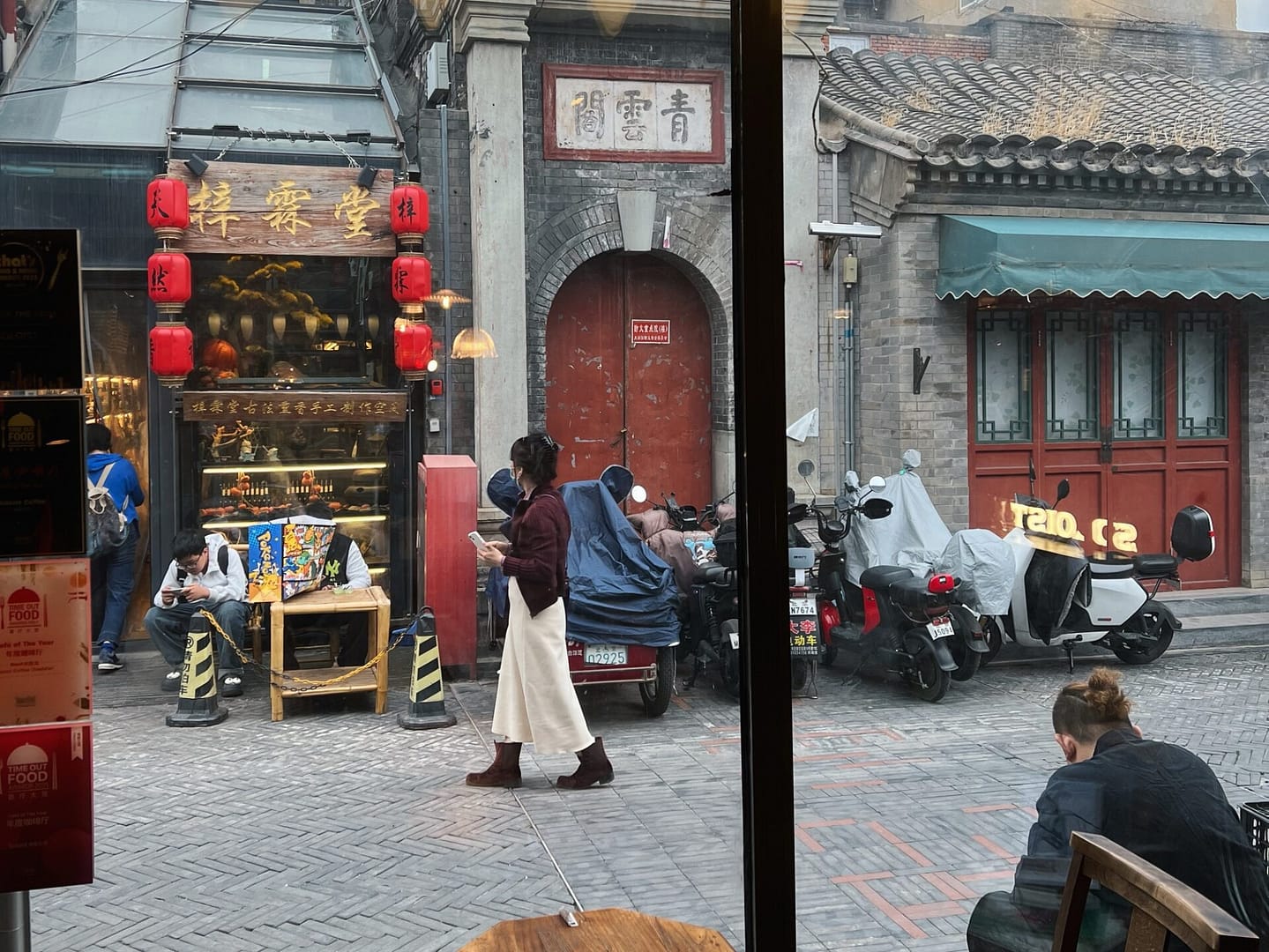Roughly three kilometers away from the center of Beijing is Yáng Méi Zhú Street (杨梅竹斜街), an old alley lined with coffee shops, souvenir shops, tea shops, handmade/secondhand/novelty shops, and several sìhéyuàn (四合院), which are traditional Chinese residential compounds made up of a shared courtyard surrounded by four buildings or houses on each side.
The street is paved with history. You can see it, taste it, and unfortunately, also smell it. A word of warning before entering the public restrooms on this street: take a long deep breath before entering, and you might want to hold that in up until you exit.
Yáng Méi Zhú Street is a classic example of a hútòng (胡同)—a narrow alley formed when a few sìhéyuàn are built alongside each other in a line. Hútòngs have changed in form and function since their first appearance during the 13th-century Yuan Dynasty. What were once primarily passageways that connect residential units, have now evolved into little centers of commerce and culture.
I love hútòng hunting in Beijing. Each visit is like meeting a new quirky friend. Never too imposing, always something weird and interesting to discover.
As I sit in a coffee shop built into one of Yáng Méi Zhú‘s old buildings, I’m drawn to the interiors of the space. The walls are filled with rusty pieces of art, which appear to have been accumulated over the years. A bicycle hangs over my head, my hand bumps into it every time I stretch. The stairs to the second floor are without any handrails. The smoking area on the balcony seems to be everyone’s favorite spot. I wonder what this space’s past life used to be.
From behind the shop’s floor-to-ceiling window, I see the locals walk, ride their scooters, push their carts past me. The structure of a hutong naturally inspires movement. After all, it was built for passage. One practically enters a hútòng to go through it, all while taking a few stops along the way.
I’m reminded of this note-to-self I wrote on my phone, which I would read as a quick antidote to some recent anxieties:
Experiences don’t happen to me, but through me. I am not the end point of an experience but a channel by which it is processed and transformed into something new. In the same way, I am by no means the source of any idea, creation, or achievement. There is a much greater source—one that has spoken through history, art, culture, and other people, to touch, inspire, and work through me.
In many ways, we are just like hútòngs. This coffee shop wasn’t here 700 years ago. And on the day of its eventual closing down, it will have just been one experience in the lifetime of this alley.
Minus the residents and visitors, a hútòng is, in essence, an empty linear space. It’s an address. A place for things to arrive and for people to go through. Neither the beginning, nor the end. I think humans, when we’re at our best, are the same. We move through the world and at the same time, the world moves through us.
At our best, we are de-centered. We are open. To the newness of reality. To the letting go of each passing moment. To embracing our emptiness.
I’ve noticed that much of human suffering comes from our attachment to a certain identity or state. We place ourselves at the center of everything, believing that the universe would take a detour around us by simply blocking its way through. We are the source or the end point or both.
This, of course, is folly, unless our goal is more unnecessary pressure and anxiety. Only the ego wants this. And just as the tattoo on Ryan Holiday’s arm permanently says, ego is the enemy.
While my ego constantly worries about my place in this world, the hútòng state of mind wonders the opposite, how much space does the world have in me? Is it even welcome to begin with?
I’m grateful for days like this, when the answer is undoubtably a yes, when the mind is at peace with being empty. Only then can it be a space for the world.

